Oxford University Press's Blog, page 4
June 10, 2025
The young Athenians: America in the age of Trump

The young Athenians: America in the age of Trump
“You’re not in a good position. You don’t have the cards right now. With us, you start having cards,” snapped President Trump at Volodymyr Zelenskyy, the president of Ukraine, in a so-called negotiation at the Oval Office, broadcast globally on Friday, February 28, 2025. Vice-President JD Vance went on to demand that Zelenskyy say thank you and “offer some words of appreciation for the United States of America and [Trump] who is trying to save … [Ukraine].” Before the dialogue ended with President Trump asserting “This is going to be great television,” he turned to Zelenskyy and summed it all up: “…You are either going to make a deal or we’re out. And if we’re out, you’ll fight it out… But you don’t have the cards…Once we sign that deal [a ceasefire without any guarantees], you’re in a much better position, but you are not acting at all thankful. And that’s not a nice thing. I’ll be honest. That’s not a nice thing.”
Behind all these assertions by the U.S. president and vice president that Ukraine must follow directives—indeed, that Ukraine has no choice but to comply with whatever the U.S. dictates—lies the belief that might makes right. The ancient Athenians made similar arguments in a remarkably analogous dialogue recorded in Thucydides’ History of the Peloponnesian War, specifically during the conflict between Athens, a state at the height of its power, and the small, weak island of Melos.
In 416 BCE, during a truce between Sparta, Athens, the two states embroiled in the Peloponnesian War (431–405 BCE), Athens, without any clear motive or moral justification, sent a large army to Melos, a neutral state during the war, demanding that Melos join the Athenian alliance. “Right,” they claimed, “is only in question between equals in power, while the strong do what they can and the weak suffer what they must” (Thuc. 5.89).
The Melians were fully aware that by deciding whether to join the Athenians, they were facing a choice between war (against Athens), should they choose to maintain their neutrality, and slavery (to Athens), if they did not. They contended that they ought to be permitted to remain neutral, but Athens responded to each of their arguments with refusal and points that highlighted their superior power. At the conclusion of this disheartening dialogue, the Athenians told the Melians:
“Your strongest arguments depend upon hope and the future, and your actual resources are too scanty, as compared with those arrayed against you, for you to come out victorious. You will therefore show great blindness of judgment, unless, after allowing us to retire, you can find some counsel more prudent than this … And it is certain that those who do not yield to their equals, who keep terms with their superiors, and are moderate towards their inferiors, on the whole succeed best. Think over the matter, therefore, after our withdrawal, and reflect once and again that it is for your country that you are consulting, that you have not more than one, and that upon this one deliberation depends its prosperity or ruin.” (Thuc. 5.111)
With us, they said, you will have cards. But you are not acting at all thankful to us, who can guarantee your security.
This notion that might is right is foundational for the realist school of International Relations, which argues that power, often enforced through violence or war, structures the relationships among sovereign nations. However, the apparent rationality of Trump and Vance’s arguments, as well as those of the ancient Athenians, is misleading.
Thucydides’ presentation of the Athenians in this dialogue is not positive. At the end of it, the Athenians besieged the Melians, who surrendered a few months later and faced the harsh penalty of having all the male citizens executed and all the women and children sold to slavery. These were reprehensible acts to Thucydides, most of the ancient Greeks, and probably many of the Athenians. A few months later, the Athenians made an arrogant and disastrous decision to invade the island of Sicily, where they suffered an utter defeat that marked the beginning of their loss to the Spartans in the Peloponnesian War. Thucydides, who was writing his history after Athens had been defeated in Sicily, offers the Melian dialogue as an example of how states should not behave toward one another. The events on Melos mark a turning point in Athens’ history, when its excessive use of force and abuse of power eventually came back to bite and destroy the Athenians. In 411 BCE, after the disaster on Sicily, Athens briefly abolished its democracy and instituted an oligarchy, followed just 7 years later by another oligarchic regime that ruled violently, disenfranchised most Athenian citizens, and killed foreigners and citizens alike to get rid of enemies. It took a civil war in Athens to restore democracy and return to a healthy civic community.
Athens’ behavior toward the Melians and the belief that power equates to justice led the Athenians directly into a civil war. As a professional historian, I do not think that history repeats itself. Instead, I believe not knowing history is like driving without rear-view mirrors. The televised negotiations in the Oval Office should make us all cautious about the future for the U.S. and the world. As we rush headlong into the future, we should slow down and consider whether there are alternative ways to structure international relations based not on fear and strength, but on positive values like community and peace. We must reflect on whether our states’ actions, or even our own, align with a good moral code and whether war is genuinely inevitable.
Featured image by Constantinos Kollias via Unsplash.
June 4, 2025
The Naval Academy Class of 1940 [slideshow]

The Naval Academy Class of 1940 [slideshow]
As shocking as the Pearl Harbor attack had been for the Naval Academy Class of 1940, the sudden arrival of peace was nearly as disorienting. Most of the Forties, as they were known, were still only 27 years old, and the great adventure of their lives was now behind them. The war had dominated virtually all of their adult lives, from Hitler’s reoccupation of the Rhineland in 1936 to Japan’s surrender in 1945. For nine years, they had been directed by circumstance, authority, and a shared feeling of responsibility. They had served in different theaters, in different jobs, on different ships—or planes, or battalions. Yet all of them had been forged, tempered, and tested. Every man in the class knew someone who had been killed in the war, and the sacrifice of their classmates was etched into their hearts.
They had learned to live in the moment; now they had to think of the future. For the next two decades and longer, they served in a wide variety of assignments throughout the world. For some of them, there was another war, in Korea. For a few, there was even a third war, in Vietnam. Throughout it all, they stayed in touch with one another, attended class reunions when they could, and caught the occasional Navy football game. Eventually, they retired. Some took up a new profession; several became teachers. But none of them ever forgot their trial by fire in the Second World War, nor did they forget one another. They were always Forties.
[See image gallery at blog.oup.com]Feature image credit: Graduation day at Annapolis, Class of 1940. Library of Congress, Prints & Photographs Division, photograph by Harris & Ewing, [reproduction number, e.g., LC-USZ62-12345]. Public domain.
June 3, 2025
Gen Z and the future of audit

As Gen Z enters the audit profession, both educators and employers need to take note of their changing expectations around careers and adapt as needed. By aligning academic preparation with the expectations of employers, educators play a critical role in shaping future auditors who are engaged, resilient, and ready to lead. But before students enter the workplace, their understanding of what audit is and what it can be is developed largely in the classroom by our activities as educators. We have the unique opportunity to shape how Gen Z perceives audit—not just as an academic subject, but as a career.
Who is Gen Z?Born roughly between 1997 and 2012, Gen Z students are ‘digital natives’ with strong values around diversity, inclusion, mental health, and work-life balance. They want careers that offer more than a good salary and security—they’re looking for meaningful impact in their work and flexibility in how they work. In the classroom, this often translates to a desire for engaging, applied learning experiences, not just memorizing rules taught in lectures. They also value autonomy and self-direction, meaning traditional, top-down teaching styles may not resonate as effectively. As educators, adapting our teaching approach to meet these expectations can make audit more accessible, relevant, and inspiring to Gen Z.
Why this matters for audit educationFor many students, their university modules on audit and related topics are the starting point for understanding audit and developing perceptions about what working in audit might be like. If students see audit as rigid, outdated, or lacking in purpose, they are less likely to pursue it. But if they encounter audit as a dynamic, evolving profession—one that plays a vital role in upholding public trust and enabling business accountability—they are more likely to engage. As educators, our influence is powerful. We can shape not only students’ technical competencies, but also their sense of what kind of career audit offers.
A purpose-driven professionIt is crucial that audit is put forward as a purpose-driven profession. Today’s students care deeply about making a difference. They are more likely to engage with audit when they understand its role in protecting stakeholders beyond investors. In my own classes, the sessions where we consider the evolution of the profession in terms of sustainability assurance resonate strongly with students as they begin to see the importance of the profession beyond the purely financial. Using real-world cases and discussions to highlight how auditors contribute to ethical business and societal well-being is a great way to engage students and show them how the profession is dynamic and responsive to global challenges.
Digital advancesAudit has sometimes been unfairly perceived as dry, mundane and repetitive. But audit practice is rapidly changing, especially with the rise of audit data analytics and artificial intelligence. Integrating these topics into the classroom helps students see the relevance of what they’re learning and prevent worries about AI threatening the existence of the audit profession. Using simulations and providing demonstrations of audit software tools where possible gives students a taste for how audit is performed in the real world. Hands-on experience with emerging audit technologies introduces exciting new learning opportunities for students.
The importance of skills and behavioursWhile technical proficiency remains essential, we know that audit firms value a range of skills and behaviours. Resilience, adaptability, and the ability to apply ethical judgment and professional scepticism are sought-after skills. Embedding these into our teaching and assessments—through group work, presentations, or ethical dilemma exercises—can help students build resilience and confidence. I use a role-play based on fraud to support students in developing a behaviour of professional scepticism—an activity that goes down well in class and which students remember and discuss in job interviews. Encourage students to think beyond “what” and explore “why” and “how.” Why do auditors need professional scepticism? How do they respond to emerging challenges like sustainability reporting?
Bring the profession into your classroomGen Z values transparency and career clarity. Help demystify the audit career path by inviting guest speakers from audit and assurance practice, professional bodies and business. Collaborate with local firms to develop teaching and learning activities such as mock audit tenders, audit planning meetings, and reviews of audit work. But it’s not just about the audit process. Gen Z students may not be aware of the strategic role auditors play in risk management, sustainability reporting, or data assurance. Including these developments in the curriculum can help students see audit as future-oriented and intellectually rewarding.
By making the curriculum more applied, aligned with the evolution of the profession, and engaging, we as educators can help to ensure that the next generation of auditors is not only technically competent and equipped with relevant skills but is also excited at the potential to join the profession. With the right teaching tools and approaches, we can inspire students to see audit not just as a job, but a rewarding career which aligns with the core values of Gen Z.
Featured image by Kelly Sikkema via Unsplash.
June 2, 2025
10 books to read this Pride Month [reading list]

10 books to read this Pride Month [reading list]
Dive into ten remarkable books that illuminate the diverse and vibrant experiences of the LGBTQ+ community. From historical explorations that uncover the rich tapestry of LGBTQ+ history to biographies of influential musical figures who have shaped the cultural landscape, these books offer invaluable perspectives. Whether you’re looking to educate yourself, find inspiration, or simply enjoy compelling stories, these books are essential reads that honor and uplift LGBTQ+ voices.
Choosing Love: What LGBTQ+ Christians Can Teach Us All About Relationships, Inclusion, and Justice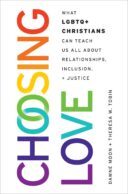
What does the battle between conservative Christians and LGBTQ+ people look like from the vantage point of those who are both? Choosing Love brings together LGBTQ+ conservative Christian experiences with insights from civil rights thinkers, Black feminism, and queer thinkers of color.
Learn more about Choosing Love by Dawne Moon and Theresa W. Tobin
On Elton John: An Opinionated Guide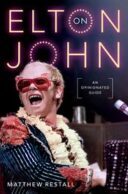
A lively and imaginative exploration of the career and music of the Rocket Man. Elton John is not only “still standing,” he is a living superlative, the ultimate record-breaking, award-winning survivor of the great era of pop and rock music that he helped to shape during his six decades in the music industry.
Learn more about On EltonJohn by Matthew Restall
The Dandy: A People’s History of Sartorial Splendour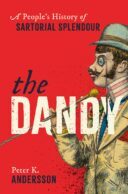
The Dandy: A People’s History of Sartorial Splendour constitutes the first ever history of those dandies who emanated from the less privileged layers of the populace—the lowly clerks, shop assistants, domestic servants, and labourers who increasingly emerged as style-conscious men about town during the modern age. Discover the hidden history of the transgender dandy in interwar Paris and Berlin, the zoot suiter, the teddy boy, the New Romantic, and the many colourful dandies from the past that continue to influence us today.
Learn more about The Dandy by Peter K. Andersson
The New Negro: The Life of Alain Locke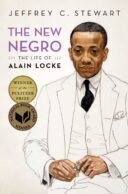
In the prize-winning The New Negro: The Life of Alain Locke, Jeffrey C. Stewart offers the definitive biography of the father of the Harlem Renaissance, based on the extant primary sources of his life and on interviews with those who knew him personally. This year marks the 100th anniversary of The New Negro. What better way to celebrate than by learning more about the life of Alain Locke, the man who popularized the term.
Learn more about The New Negro by Jeffrey C. Stewart
The Things She Carried: A Cultural History of the Purse in America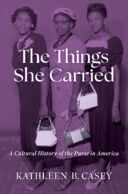
The Things She Carried explores how purses have served as more than fashion accessories—they’ve been symbols of privacy, pride, and activism. Kathleen B. Casey examines their role in breaking social barriers, from Black women in the civil rights movement to LGBTQ+ individuals using bags to defend their bodies and as declarations of identity. This powerful history highlights how everyday objects can become tools for resistance and self-expression, making it a compelling read for Pride Month and beyond.
Learn more about The Things She Carried by Kathleen B. Casey
Colette: My Literary Mother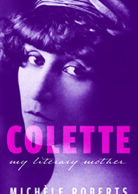
Colette was a pioneering, ground-breaking modernist writer, but has not always had her originality and worth recognized in Britain. Her work provocatively uses unstable narratives, gaps, silences, fairytale, mythical tropes, and sensual evocations of childhood, sex, and landscapes. Michèle Roberts examines how Colette expresses her unsettling content on desire, perversion, ageing, and different forms of love.
Learn more about Colette by Michèle Roberts
James Baldwin’s “Sonny’s Blues”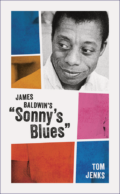
James Baldwin’s work remains profoundly relevant, offering a lens into the intersections of race, sexuality, and identity. His fiction explores personal dilemmas amid complex social pressures, as seen in Giovanni’s Room, which centers gay and bisexual experiences, and Sonny’s Blues, where music becomes a metaphor for resilience. Tom Jenks’s analysis of Sonny’s Blues highlights Baldwin’s meticulous storytelling, showing how the narrative stays with readers. Baldwin’s exploration of masculinity, race, and class challenged norms and shaped conversations around LGBTQ+ rights, making his work essential reading.
Learn more about James Baldwin’s “Sonny’s Blues” by Tom Jenks
Forbidden Desire in Early Modern Europe: Male-Male Sexual Relations, 1400-1750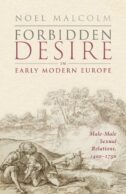
Until quite recently, the history of male-male sexual relations was a taboo topic. But when historians eventually explored the archives of Florence, Venice and elsewhere in Europe, they brought to light an extraordinary world of early modern sexual activity, extending from city streets and gardens to taverns, monasteries and Mediterranean galleys.
Learn more about Forbidden Desire in Early Modern Europe by Sir Noel Malcolm
The Well of Loneliness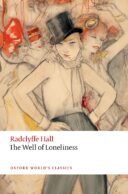
The Well of Loneliness is among the most famous banned books in history. A pioneering work of literature, Radclyffe Hall’s novel charts the development of a ‘female sexual invert’, Stephen Gordon, who from childhood feels an innate sense of masculinity and desire for women.
Learn more about The Well of Loneliness by Radclyffe Hall
Leaves of Grass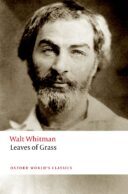
Walt Whitman’s Leaves of Grass stands as one of the most influential and innovative literary works of the last two hundred years. Widely credited as the originator of free verse in English, Whitman put forward a radical new language of the body, the nation, and same-sex love.
Learn more about Leaves of Grass by Walt Whitman
Check out these books and more on Bookshop US and Bookshop UK.
Feature image by Steve Johnson via Unsplash.
May 30, 2025
What I learned from reading Harlan Ellison
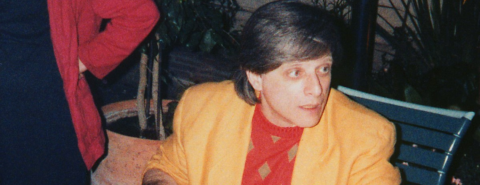
What I learned from reading Harlan Ellison
When I was in high school, I went through a Harlan Ellison phase. Ellison, who died in 2017, was a prolific science fiction and screenwriter and the author of such stories as “‘Repent, Harlequin!’ Said the Ticktockman,” “I Have No Mouth, and I Must Scream,” and “A Boy and His Dog,” as well as the celebrated Star Trek episode “The City on the Edge of Forever.”
I had no ambition to write science fiction, but I liked Ellison’s edginess and I soon stumbled onto his two books of television criticism: The Glass Teat and The Other Glass Teat. Published, respectively in 1970 and 1975, these were collected essays originally published in the Los Angeles Free Press. Ellison dissected network television’s presentation of politics, sex, race, culture, and more, and his writing had a snark and sarcasm that appealed to high school me.
Stylistically, what stood out most was his use of parentheses. In the essays, Ellison used them all the time. In a random four-page section I count six parentheticals, some as long as a paragraph. Elsewhere, I found a couple that went on for more than half a page.
Here are a handful of examples. Commenting on a young TV personality who spoke in “a syntactical jumble of ‘yeahs’ ‘uh-huhs’ and ending lamely with ‘I really don’t know’.” Ellison twists the knife with “(Everything she comments on ends with ‘I really don’t know.’).” Writing about First Tuesday, the NBC network’s answer to CBS’s 60 Minutes, he offers this aside: “(And wouldn’t you know the sonsofbitches would put it on directly opposite 60 Minutes …)” Occasionally, the parentheses explain a novel word usage such as “I sat Elmer’d (as in the glue) in front of various TV screens” or “things here in the ‘underground’ (if you’ll pardon the pretension) are not good.” Ellison used the parenthesis to amplify his outrage, to underscore his smart-alecky awareness, and even occasionally to poke fun at himself.
For a time, Elision’s style left a mark on me as a writer. I began including (what I thought were) pointed, witty asides in my essays and correspondence. I got away with it in high school, less so in college, and finally my wife convinced me to give it up. It was, she said, “too cutesy” and “distracting.”
Every now and then, I miss parentheses and trot a pair of parens out, but for the most part I’ve given them up. The style worked for Ellison, who managed to never be too cutesy and whose distractions were interesting, but I could not pull it off. I would later describe parentheses to my students as a whispered aside, as opposed to the breathless shout of dashes or the matter-of-factness of commas. It was a device, I would say, not to be overused.
There is a coda to this tale of parentheses. Fast forward about twenty years from high school, and I saw Ellison speak at the university where I was working. In his talk to a packed house, I listened as he began one story, then started another, then another and then two more. After concluding the final story, he went back to the penultimate one, then the ones before that, wrapping up each in its place until he was back at the first story. I laughed, realizing that he was using parentheses within parentheses within parentheses to narrate his stories. Whether in an essay or in a lecture, parenthesis was a rhetorical trick he had mastered.
But it is not a trick for everyone to attempt.
Featured image: Harlan Ellison at the LA Press Club. Photo by Pip R. Lagenta. CC-BY-2.0 via Wikimedia Commons.
May 28, 2025
Cringing with dignity, or the crux of the matter

Cringing with dignity, or the crux of the matter
I have “sauntered,” I have paid some respect to “lust” (see the previous two posts), and now I am ready “to cringe.” The most interesting part of today’s story is not even the origin of the verb cringe but the multitude of words, possibly related to it and explaining nothing. Hence the reference to sham dignity in the title.
In the form in which it has come down to us, cringe was recorded rather late, only in Middle English texts (the first known example goes back to the thirteenth century). The form cringe and its old doublet crenche correspond to Old English cringan ~ crincan “to fall in battle.” Historical semantics knows two processes: the deterioration of meaning and the amelioration of meaning. For instance, the adjective nice, also first recorded in the thirteenth century, was borrowed from French with the sense “silly, simple” and did first mean “foolish; wanton; difficult to manage” but ended up as a “pleasant, delightful.” By contrast, fond meant “foolish” and gradually merged with the sense “having a strong liking (for).” Cringe has obviously “deteriorated.”
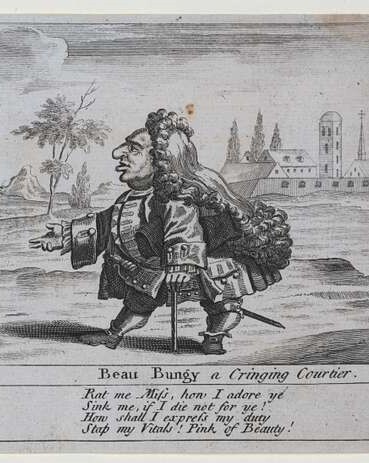 This is cringing.
This is cringing. From The New York Public Library, public domain.
The English verb has cognates in most languages of the Germanic-speaking world. Dutch krengen “to heel over” and Old Norse kranga “to creep along” (there also was krangr “weak”) seem to belong here. This list of related forms does not provide a clue to why a sound combination like kr-nk suggested to speakers the idea of bending or shrinking. We may not be able to find the golden key, but etymologists are beggars and should not pretend to be choosers. Knowing this, we may go back to the environment of cringe.
Next to Old English cringan ~ crincan “to fall in battle,” crincan “to yield” (originally, “to weaken”) existed. As the OED online suggests, the two verbs coexisted: one meant “to bend” and the other “to make bend.” Today, the verb crinkle “to bend; wrinkle, etc.” (from Old English crincan) exists. Its oldest history is obscure, but there is hardly any doubt that cringe and crinkle are in some way related, and that is all we need to know. In older German, the verb krenken “to weaken” existed, which interests us mainly because Modern German krank “sick, ill” is related to it.
With krank, we find ourselves in a rather inhospitable snake pit. The cousins of krank are plentiful in English. Crank “liable to capsize; crabbed; awkward; infirm, shaky” is not a borrowing from Dutch or German but a true cognate. The noun crank “portion of an axis bent at right angles” also seems to be related, even if a bit obscurely, to Old English crincan and cringan (“yield” and “bend”). Crank “bend, crook” is, for all intents and purposes, the same word. Cranky “tortuous, eccentric, cross-tempered; silly” emerged in books only in the sixteenth century but obviously, belongs to our story. Hence the Americanism crank “an eccentric person” now well-known also outside the United States. No doubt, cringle “a ring of a rope”, borrowed from Low German, is another part of the family. As a curiosity, I may mention that German Kringel ~ Krengel “a kind of pretzel,” deservedly popular in its country of origin, made its way into Russian and became krendel.
 A pretzel is not a krendel, but they are non-identical twins.
A pretzel is not a krendel, but they are non-identical twins. Public domain via Wikimedia Commons.
There is no doubt that all the words discussed above have a common feature, namely “round or crooked.” It comes as a surprise that they have no established etymology: in the best dictionaries, we find only long lists of cognates, sometimes also outside the Germanic family. Occasionally, a special helpful note alerts us to the fact that the oldest history of the entire group is unknown. But already in 1902 (such is the earliest reference in my database), Joseph Schrijnen, an excellent Dutch philologist, observed that the Germanic words for “ring” (hear, hear!) resemble and may be related to those meaning kring-. The resemblance is unmistakable.
 Scrambling for promotion.
Scrambling for promotion. Image via Amtec. CC-BY-SA 2.0.
At one time, ring had initial h: the oldest form was hring-. We also notice the similar-sounding word wring. Of those, hring holds out more promise to etymologists, because it has a good Slavic cognate, Russian krug “round, circle,” among others. It is related to Engish rung (from hrung), defined as “stick of rounded form [“stick of rounded form”!!] used as a rail; a spoke of a wheel,” etc., though most of us probably associate rung with “a step of hierarchy.” Rung had related forms in fourth-century Gothic, namely, hrugga (pronounced as hrunga) “staff.” Though staffs and poles are not round, roundness seems to be the implied goal: in order to twist or bend something, one should first have a straight object. (It seems that with this kind of reasoning one can prove almost anything.)
The previous statement looks like trying to save a hopeless etymology, but long ago, the initial meaning of rung was reconstructed as “a round pole.” This odd gloss was, naturally, contested by other specialists. Squaring the circle and making a straight object round are hard tasks. Rung, in its figurative sense, means “step,” and steps are neither round nor bent. To show how shaky our ground in this case is, I may mention a few more cognates of rung. One of them is Latin crux “cross.” Still another noun, related to rung (from hrung), is ridge (from hrycg; Germs Rücken, noun, means “back”). About every word, mentioned above, solid dictionaries say with rare consistency: “Origin unclear, doubtful, unknown.” Isn’t it amazing? Reliable cognates in Slavic, Latin, and Sanskrit, all having more or less the same sense, and yet the origin is still “unclear.” A squirrel is busy running in its cage and not getting anywhere! What is it that will make the sought-for etymology clear? How can our squirrel leave its cage and reach a tree?
Perhaps English wiggle ~ waggle will provide some help? Alas, no. The English verb is a borrowing from Dutch, where its traces are lost. I am finally coming to the point: no more meandering. It seems that once upon a time Germanic had the sound groups hring- ~ kring- ~ wrink-, all of which, for the reasons that are beyond reconstruction, suggested bending, twisting, and coiling (with the initial point being, naturally, something straight). Those groups mut have been sound-symbolic, and that is perhaps why we failed to find their origin. Sound symbolism is in the eyes (ears) of the beholder. Its existence cannot be proved. Only sound imitation (croak, gaggle, twitter, and the rest) is obvious. Yet the existence of three rhyming synonyms, whose etymology remains undiscovered (and for aught I understand, will remain such) perhaps makes my idea, inspired by Schrijnen’s observation, not entirely groundless. A blog is a genre that allows its author to risk a hypothesis, without being laughed out of court or fearing retribution. If it is promising, fine. If it is unacceptable, too bad.
At the end of this month, the merry month of May, I will be at the conference of the Dictionary Society in Buffalo, NY. Therefore, the next installment of this blog will appear in two weeks.
Featured image: A squirrel in a wheel. CC0 via Picryl.
May 22, 2025
Spain 50 years after General Franco

Spain 50 years after General Franco
Few countries in the world have changed as dramatically as Spain has since the death of General Franco 50 years ago. Following his victory in a three-year civil war, Franco ruled as dictator for nearly four decades. His successor, King Juan Carlos, whose appointment by Franco in 1969 restored the Bourbon monarchy, abolished in 1931when the Second Republic was declared, used the dictator’s immense powers to transition Spain to democracy, for which there was a crying need among the population.
Today the country is one of only 25 nations out of 167 ranked as a “full democracy” by the Economist Intelligence Unit. The economy has moved from being very protectionist to a high level of openness, as measured by foreign trade and direct foreign investment. Spain was a founding member of the eurozone. Socially it is one of the most progressive countries; same-sex marriage was legalized in 2005, euthanasia and assisted suicide in 2021, and paid menstrual leave in 2023.
 Franco and Juan Carlos.
Franco and Juan Carlos. Photo via Anefo. Public domain, Wikimedia Commons.
But in 2025 the country faces a host of challenges, some of them not new but becoming ever more urgent. The unemployment rate has come down from a peak of 27% in 2013, following the 2008 global financial crisis and the bursting of Spain’s immense property bubble, but at 11% it is still double the EU average. The economy is heavily reliant on tourism (94 million international visitors in 2024, the second largest number after France), a seasonal industry; R&D spending, central for technological change and innovation is low (1.2% of GDP), and the state pension system in a country with a fast-ageing population and one of the world’s highest average life expectancies is coming under increasing pressure.
There is also an acute housing crisis, which is deepening the divide between the relatively poor living standards of young adults, unable to get on the property ladder, and the more comfortable life of the elderly. This crisis is aggravated by the influx of immigrants in recent years, who are needed to work in sectors, such as agriculture, construction, and to care for the elderly, and to keep the population growing. Spain’s fertility rate of 1.2 children is far below the replacement rate of 2.1 needed to maintain a stable population. Most of the 8 million increase in the population between 2000 and 2024 was due to immigration.
Other problems include the colonization by politicians of state institutions and companies; the government’s overuse of decree laws that obviate the need for parliamentary debate; corruption that is perceived to be relatively high; political pressure on the judiciary, and the closed party system list to elect MPs. Under this system, candidates are elected in the order in which they appear on the voting list. Since that order is decided by the party’s leadership, MPs are then beholden to the leadership–a system that fosters unquestioning obedience and stifles debate. A Pew survey showed close to 70% of respondents in Spain dissatisfied with the functioning of its democracy, the second highest level among the EU countries included in the survey.
As if these problems are not enough, resolving them is in the hands of a highly polarized and fragmented political class that is identified by the state pollster CIS as one of the country’s biggest problems. Tackling the problems and structural challenges for the greater good requires broad consensus across the political divide. More than 80% of Spaniards, according to the private pollster Metroscopia, would like to return to the spirit of compromise of the 1975-1978 transition to democracy.
That spirit saw broad consensus between the Socialists and the conservative Popular Party (PP), the two main parties, to resolve issues for the good of the country as a whole. Since 2015, however, hard-right and hard-left parties have entered parliament, making consensus much more difficult. The combined share of the Socialists’ and the PP’s vote dropped from 73.4% in 2011 to 50.7% in 2015, and recovered to 65% in 2023.
Spain had five general elections between 2015 and 2023, but only 10 in the preceding 36 years.
The unwieldy Socialist-led minority coalition government of Prime Minister Pedro Sánchez that emerged from the November 2019 and July 2023 elections, with a hard-left alliance as the junior partner, depends for its survival on parliamentary support from Basque nationalist and separatist parties and two Catalan separatist parties.
The movement for an independent Catalonia, which came to a head with an illegal referendum on secession in 2017, has ebbed but not lost its hold over national political life. The maximalist Together for Catalonia’s support for the current government came at the price of a broad and deeply controversial amnesty for some 400 people who faced charges for offences related to the referendum and the secession push.
Meanwhile, Spain’s public administration is still needlessly opaque. Franco’s archaic Official Secrets Law of 1968, which allows classified information to be kept secret forever, remains in force. It is very much out of line with other developed countries. In the 50th anniversary year of the dictator’s death, now would be a good time to scrap it and agree to a new one. Spain has come a long way but, in some areas, needs to go further.
Header image: Photo by Sam Williams on Unsplash.
May 21, 2025
The four-letter word lust
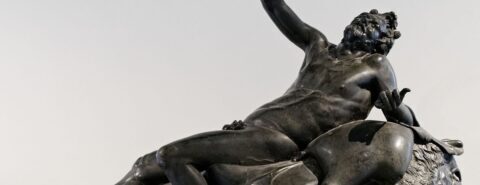
Years ago, I wrote about our four-letter words, and the comments were, as could be expected, numerous. Incidentally, the origin of those words is nether too interesting nor (in at least one case) too complicated. Lust is not l*** or l**t, and one can speak about it, without hurting anyone’s sensibilities. The hitch is that the history of this word is far from clear.
Here are some basic facts. Lust (perhaps surprisingly) is an ancient non-borrowed noun. It occurred in all the oldest Germanic languages and had practically the same form and meaning everywhere. It turned up even in the fourth-century Gothic translation of the New Testament, in which lustus rendered Greek epithumía “desire.” Unlustus “dislike,” the opposite of lustus, also occurred in that translation. A few Modern English words contain the root of lust, but their ties with lust are no longer felt, the more so as they are hopelessly obsolete. Such are list “pleasure, desire” and to list “to be pleasing”. Only listless “apathetic, dispirited” has survived. By contrast, German lustig “merry” is still a conversational word, along with the noun Lust “desire, joy.” The same can be said about the Scandinavian cognates (losti, lysta, and others). Only Icelandic elska “to love,” if it belongs here, adds an interesting detail to the list above. (Compare what I said about love in the post on free two weeks ago.)
 The Rape of the Sabine Women by Rubens. Lust at its peak.
The Rape of the Sabine Women by Rubens. Lust at its peak. Public domain via Wikimedia Commons.
The origin of lust, to use a formulaic phrase, remains a matter of debate. People long, yearn, and strive for many things, and all kinds of metaphors underlie those words. A metaphor has also been searched for lust, but I will mention it later. First of all, etymologists noticed a few words outside Germanic that sound like lust and mean approximately the same. The first of them is Latin las-cīvus, which found a safe haven in English lascivious “lewd” or, according to a more pompous definition, “inclined or inciting to lust.” Amazingly close is the Russian noun laska “caress” (almost the same form elsewhere in Slavic).
A common Indo-European root las– “to be greedy, lascivious” seems to underlie all those forms. This “root” may have existed, but we of course want to know why such a combination of sounds conveyed the meaning ascribed to it. An old etymology connected lust with words for “bowing, bending” (then lustful would emerge as “having a certain inclination”). Even English little may belong to this group. However, those words are themselves of undiscovered origin and can throw no light on another obscure corner of our ancient vocabulary.
In principle, this result need not surprise us. As mentioned more than once in this blog, only sound–imitative words have a transparent origin. Ga-ga, shoo, pop, and crush ~ crash pose few or no problems. Sound symbolism is in the eye of the beholder, but it is still a factor to be reckoned with. According to a bold suggestion, all those l-st ~ l-sk nouns and verbs are indeed sound-symbolic. We may add license to the words, mentioned above, and refer to the authority of the great French historical linguist Antoine Meillet, who called Greek lilaíomai, Gothic lustus, Sanskrit lásati, and Slavic lask- expressive and belonging originally to unbuttoned, informal speech. Given this reconstruction, we have no need to look for some ancient root, but even if Meillet’s guess is acceptable, it is not immediately clear why l + some vowel + s suggested to the speakers of a huge continent the idea of desire, caressing, and unrestricted sexual freedom. I have never seen this hypothesis discussed, but Meillet’s name justifies our attention.
 Jost Trier’s idyl.
Jost Trier’s idyl. Photo by Yana Kangal via Pexels.
By contrast, another etymology of lust, allegedly explaining why, how, and where all such words came into being is known very well. I am now returning to the idea of a metaphor. The German linguist Jost Trier always looked for the origin of words in the labor activities of ancient people (in principle, an attitude worthy of unquestionable support). It is his fixation on a single factor that arouses suspicion. One of his favorite themes was the role of saplings, more precisely, of what may be called “coppice” in English. The German word Niederwald, occurring in Trier’s works, refers to a growth of young trees. He reconstructed the old root leus–a (as seen also in English lose) and offered the following scenario. Allegedly, this root denoted the leaves of trees, cut down in spring. Animals, he explained, are especially fond of such leaves, and from the animals’ leaning for and consumption of them our word, denoting “desire,” sprang up. Trier even derived the placename Lustenau from this source and supported his conclusions by explorations of ancient myths. He devoted two books to the Niederwald.
 A view of Lustenau. What a place, what a name!
A view of Lustenau. What a place, what a name! Photo: Raumplanung/Land Vorarlberg. CC-BY-SA 4.0 via Wikimedia Commons.
Trier’s reconstruction attracted both admirers and denigrators. The admirers followed him unconditionally. One of them was his lifelong friend Jan de Vries, an outstanding etymologist and expert in Old Germanic literature and mythology (especially Scandinavian), who, unfortunately, tended to worship a chosen idol, be it in politics or scholarship. But even Elmar Seebold, the latest editor of Kluge’s German etymological dictionary, found Trier’s hypothesis worthy of discussion, even though he balked at endorsing it, and Alfred Bammesberger, a leading expert in the etymology of Old English, found Trier’s idea acceptable.
Nobody harms an imaginative scholar more than the students who lack the talent of their teacher but blindly defend and develop even such of his theses that should be taken as hypotheses and treated with caution. Trier did not avoid this danger (and, most probably, encouraged his “school,” as one can judge by some dissertations he advised). Both he and his advisees have been exposed to ruthless criticism, sometimes justified, sometimes too harsh. Reading Trier is a joy. Following him blindly is dangerous.
By way of postscript, it may be mentioned, that lust has also been compared with German los “free from,” allied to the English suffix less and the archaic English word leasing “lying, falsehood.” Gothic laus and Old Icelandic lauss mean “empty.” Both lose and loose are kindred words. Apparently, we are told that lust means letting oneself “go loose.” Here again, I am not aware of anyone’s comments on this suggestion. Does it sound too simple and therefore not worthy of discussion? Scholars like convoluted and imaginative hypotheses. One also wonders whether the multiple Indo-European cognates of lust also find a good explanation in the reference to –less and its kin. As already stated, specialists have not reached a consensus on the origin of the word lust. Those who will turn to the most reliable dictionaries, including the OED, will not discover a definite answer. Even suggestions are usually missing. My opinion on this subject does not matter, but if I were pressed, I’d rather stay away from Trier’s hypothesis and treat with some interest Meillet’s idea of the expressive nature of lust and the words related to it. Lust and all kinds of desire need expressive words for naming them. One only wonders why the sound complex l-s evoked such wild associations.
Featured image: Drunken satyr. Photo by Marie-Lan Nguyen. CC-BY-2.5 via Wikimedia Commons.
May 16, 2025
How to read like Benjamin Franklin

How to read like Benjamin Franklin
Benjamin Franklin left many anecdotes about his reading in his autobiography and other writings. Though he presents himself as an example of how reading can enrich a person’s life, he never really codified his personal reading as how-to advice, but that does not mean that I cannot do so. Therefore, in Undaunted Mind: The Intellectual Life of Benjamin Franklin, I discuss many aspects of Franklin’s reading life: what he read, where he read, how he read, and why he read. What follows is a set of practical tips derived from Franklin’s experience to get the most from your reading.
1. Take advantage of spare moments.Reading about vegetarianism in Thomas Tryon’s Way to Health, Long Life and Happiness when he was an apprentice in Boston under his brother James, Benjamin Franklin convinced himself that he could prepare cheaper and healthier meals than James and his other employees took at the local tavern. When they went to lunch, Franklin stayed behind in the printshop, enjoyed his solo lunch, and spent the spare hour reading. He used the money he saved on meals to buy more books: the mark of a true bookman. In a life jampacked with activity to benefit the community and the nation, Franklin would apply what he learned as an apprentice: he always took advantage of whatever spare moments he could to enjoy reading.
2. Keep an open mind about unusual ideas.One book he read as an apprentice was Philemon Holland’s English translation of Pliny’s Natural History, a landmark in Franklin’s reading life. He laughed at Pliny’s account of a practice among the seamen of his time to still the waves in a storm by pouring oil into the sea, which Franklin considered a silly superstition. When he learned decades later that oil could indeed calm bodies of water, Franklin felt embarrassed by how readily he had rejected this Plinyism without careful consideration. It took a long time to learn, but he eventually realized that readers must not dismiss ideas from different times, lands, or cultures.
3. Talk about books with others.Here is something nonreaders never realize: people’s conversation reflects their reading. Franklin learned this lesson after he had run away from Boston. Passing through New Jersey, he encountered a surgeon and poet named John Browne, who could tell by the way the teenaged Franklin talked that he was an avid reader. Their shared love of literature formed the basis for their lifelong friendship. Once Franklin settled in Philadelphia, he befriended other young men who loved to read. Eventually, he and his friends formed a mutual improvement club they called the Junto, and, as in a modern-day book club, book discussions became a prominent feature of their weekly meetings.
4. Assemble your own home library.The Junto members each had a personal library, but Franklin got the idea for them to combine their collections to form a library greater than any of them could assemble individually. The communal library did not work, but it would lead to the formation of the Library Company of Philadelphia, the first subscription library in North America. Though the Library Company was a great resource for its subscribers, Franklin still recognized the importance for them to have home libraries of their own, which would provide ready references in the case of practical works and a never-ending source of entertainment, which a good collection of poetry, essays, and plays could provide.
5. Share your books with others.Sir Richard Steele’s Dramatic Works was one book of plays Franklin had in his personal library, at least until he loaned it to a friend, who never returned it. More than most possessions, books are notoriously difficult things to return. Franklin told his friend Benjamin Rush “that a man lost ten percent on the value, by lending his books, [and] that he once knew a man who never returned a borrowed book, because no one ever returned books borrowed from him.” Despite the unreturned books, Franklin continued to loan volumes from his library to friends throughout his life. He decided that the opportunity to share the ideas they contained was worth the risk.
Featured image by Aida Geraeva on Unsplash.
May 15, 2025
From the new Editor-in-Chief of the Oxford Classical Dictionary

From the new Editor-in-Chief of the Oxford Classical Dictionary
It is a real honour—and more than a little daunting—to take over from Tim Whitmarsh as Editor-in-Chief of the Oxford Classical Dictionary. The first edition of the Dictionary appeared more than three quarters of a century ago, in 1949, offering “an authoritative one-volume guide to all aspects of the ancient world.” A great deal has changed since, including, of course, how we view “the ancient world.” After four editions of the print dictionaries, the shift to a fully digital OCD5, begun in 2015, offered huge opportunities for improving and extending our coverage and our readers’ experience in using the dictionary.
In March 2016, this digital OCD included all 6,400 entries of OCD4, and only c. 25 new articles; since then, we have continued to build upon this impressive legacy as we continue to commission both entirely new articles and revisions of previously existing articles. (At the time of writing, in April 2025, the total of new and revised entries has reached nearly 700). The digital format allows for a number of advantages: not only does moving beyond the constraints of the printed page allow for more substantial coverage, it also allows for the embedding of links to both ancient source material and other OCD articles, as well as encouraging the use of digital images.
The revision process has allowed for substantial expansion of our coverage of such important and well-known classical authors as Sappho and Martial, and subjects such as the epithalamium and Latin metre. Our coverage of ancient history continues to include key issues, such as class and class struggle and Greek colonization, plus updated articles on Greek and Roman enslavement. The ability to include images is of great benefit to readers, in particular when it comes to the area of classical art and archaeology—as with the new article on graffiti, and the newly revised articles on Roman portraiture and Greek painting.
An increase in our coverage of the ancient Near East reflects the growing understanding of Classicists of the interconnectedness of the ancient Mediterranean: readers can learn (for example) from a newly expanded articles on Akkadian and Sumerian and a brand-new article on Mesopotamian ghosts. Jewish studies, too, is well-represented, with revised articles on rabbis and on the Sadducees. The importance of late antique and Byzantine studies to the field is increasingly recognised—note, for instance, the expanded articles on the important scholars and authors Priscian and Michael Psellos. Later reception of the classical world continues to be a growing field and our coverage includes the reception of ancient architecture and other forms of visual and material culture (such as the afterlives of the Pantheon and of triumphal arches), as well as of literature.
While women were traditionally overlooked in classical scholarship, recent articles include a new entry on Iulia Balbilla, who travelled to Egypt with the emperor Hadrian and his wife Sabina and commemorated her visit by inscribing four poems on the left leg of the Memnon Colossus, as well as an expanded entry on women in philosophy. The experiences of a much wider range of women are commemorated in the article on the female life-course. Science, technology, and mathematics are indeed well represented, such as by new and revised articles on Egyptian mathematics and knowledge about animals.
As with previous editions of the OCD, we commission state of the art articles on new and evolving areas of classical scholarship, showing the impact of modern approaches. This can be seen across the different fields covered by OCD5, but includes new articles on cognitive science and on pain. In the broad realm of science and technology, we are increasingly aware of the importance of issues relating to the climate, and you will also find a newly revised article on meteorology; meanwhile, the ways in which the boundaries between the human and non-human were also of concern in classical thought are explored in our new article on robots and cyborgs in antiquity.
The OCD is the product of longstanding international collaboration, and we continue to expand to include an increasingly diverse range of authors and editors. What we have in common is a commitment to the mission of Oxford Classical Dictionary to continue to provide a truly authoritative home for classical scholarship, even as definitions of the “classical” continue to evolve, and digital advances and other changes alike continue to transform the way both scholars and the wider public encounter the ancient world. Please do feel free to get in touch with your own suggestions for what continues to be an exciting and ongoing collaborative project.
Featured image by Linda Gerbec via Unsplash.
Oxford University Press's Blog
- Oxford University Press's profile
- 238 followers



